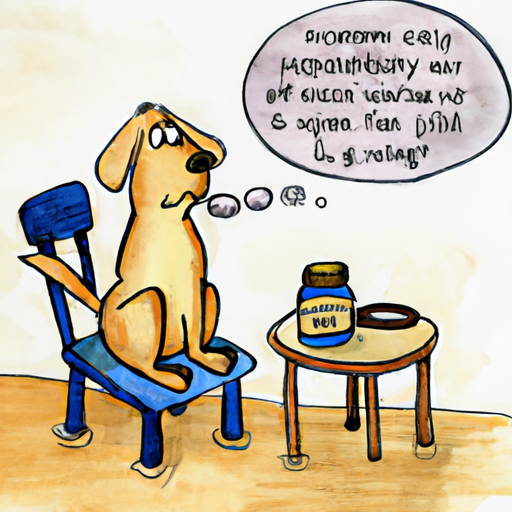As a caregiver to your furry friend, you might have noticed that they seem to go crazy over peanut butter. But why is that? Let’s dive in and explore this fascinating topic in depth.
1. The Allure of Peanut Butter: Taste and Texture
First and foremost, dogs love the taste of peanut butter. It’s sweet, salty, and packed with flavor, which appeals to their sense of taste. On top of that, the creamy, sticky texture of peanut butter is intriguing to dogs and keeps them entertained.
- Taste: Dogs have fewer taste buds than humans (approximately 1,700 on their tongues compared to our 9,000), but they can still detect sweet, sour, salty, and bitter flavors. Peanut butter’s sweet and salty combination is a hit with many dogs.
- Texture: The unique, sticky texture of peanut butter can provide a fun challenge for dogs as they try to lick it off their noses or out of a toy.
2. Nutritional Benefits of Peanut Butter for Dogs
While taste and texture are the primary reasons dogs love peanut butter, it also has several nutritional benefits:
- Protein: Peanut butter is a good source of protein, which is essential for building and repairing body tissues in dogs.
- Healthy fats: The monounsaturated fats in peanut butter can help keep a dog’s coat shiny and healthy.
- Vitamins and minerals: Peanut butter contains vitamins B and E and minerals like iron, zinc, and magnesium, all of which are beneficial for dogs’ health.
However, not all peanut butter is created equal, and some can be harmful to dogs. Read on to find out what to look for and what to avoid.
3. Choosing the Right Peanut Butter for Your Dog
When it comes to choosing peanut butter for your dog, the rule of thumb is: the simpler, the better. Here’s a quick comparison table:
| Good Options | Bad Options |
|---|---|
| Unsweetened peanut butter | Peanut butter with artificial sweeteners, especially xylitol |
| Natural, unsalted peanut butter | Peanut butter with added salt, sugar, or palm oil |
Xylitol, a common artificial sweetener found in some peanut butter brands, is toxic to dogs and can cause hypoglycemia, liver failure, and even death. Always check the ingredients list before feeding your dog peanut butter.
4. Creative Ways to Use Peanut Butter for Dogs
Peanut butter isn’t just for direct feeding. Here are some creative ways to incorporate it into your dog’s diet and activities:
- Training treats: You can use small dollops of peanut butter as a high-value reward during training sessions.
- Medication disguise: If your dog resists taking medication, hiding the pill in a spoonful of peanut butter can make the process easier.
- Toys stuffing: Fill a Kong or similar toy with peanut butter to keep your dog entertained for hours.
Remember, despite its benefits, peanut butter should be given in moderation due to its high-fat content. Too much can lead to obesity and other health problems.
5. Frequently Asked Questions
Q: Can all dogs eat peanut butter?
A: Most dogs can eat peanut butter without any issues. However, some dogs may be allergic to peanuts. If you notice any signs of an allergic reaction (like itching, swelling, or difficulty breathing), contact your vet immediately.
Q: How much peanut butter can I give my dog?
A: As a general rule, treats (including peanut butter) should make up no more than 10% of your dog’s daily caloric intake. For a small dog, this might be just a teaspoon, while a larger dog might be able to handle a tablespoon or two.
Q: Can I use peanut butter to distract my dog during grooming or vet visits?
A: Yes! Applying a small amount of peanut butter on a lick mat or inside a toy can keep your dog occupied during stressful situations like grooming or vet visits.
In conclusion, dogs love peanut butter for its tantalizing taste, fun texture, and nutritional benefits. By choosing the right kind and feeding it in moderation, you can make peanut butter a healthy and enjoyable treat for your beloved pet.



